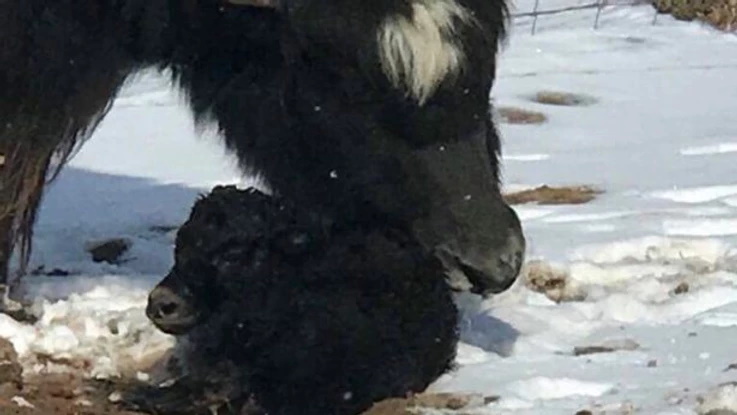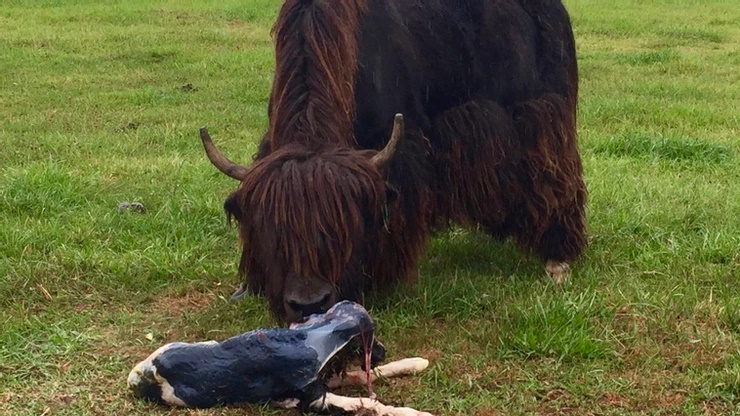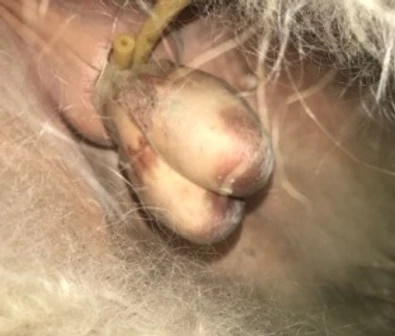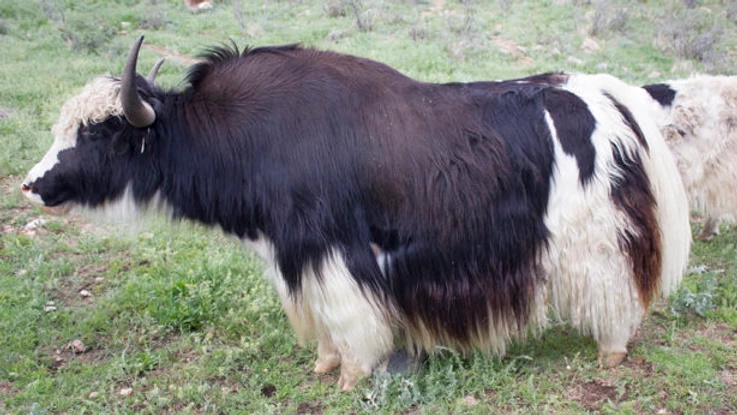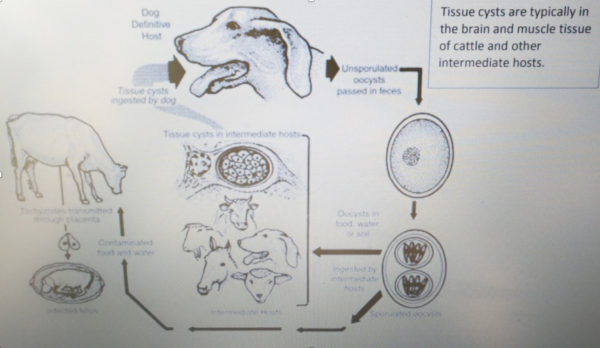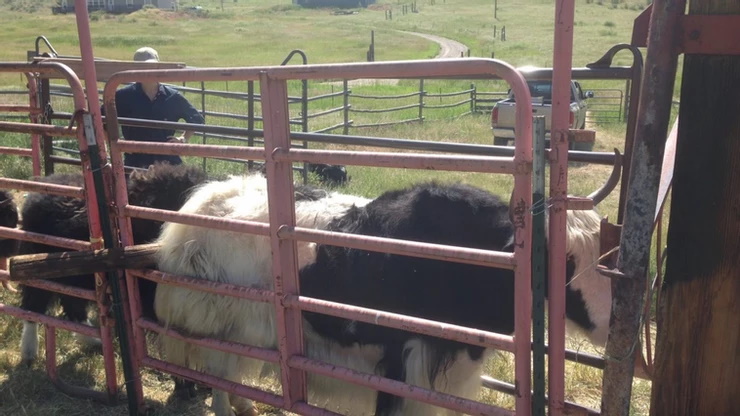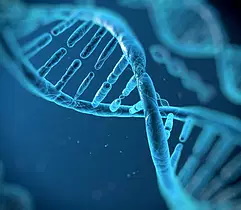Click below to read the original article
Category: Herd Health
Yak Obstetrics
Click below to read the original article
Protect newborn calves from flies during fall calving
Click below to read the original article
Cold Stress and Newborn Calves
Michelle Arnold, DVM (UKVDL) Dr. Michelle Arnold, Large Ruminant Extension Veterinarian, University of Kentucky. Dr. Arnold is a member of the US YAKS Science Committee and the Health Committee. When the weather is predicted to be bitterly cold, producers should take extra care of newborn calves to ensure their survival. A calf’s body temperature often… Continue reading Cold Stress and Newborn Calves
Emergency Calf Management After Dystocia (Difficult Birth)
Dr. Michelle Arnold, Ruminant Extension Veterinarian, University of Kentucky. Dr. Arnold is a member of the US YAKS Science Committee and Health Committee. She is also conducting the yak trace mineral study. Dystocia can be defined as a difficult or abnormal calving due to a prolonged, unassisted birth or due to a prolonged and/or severe… Continue reading Emergency Calf Management After Dystocia (Difficult Birth)
Don’t Forget Tetanus Prevention when Banding Bulls!
Written by Michelle Arnold, DVM (Ruminant Extension Veterinarian, UKVDL), University of Kentucky, member of the US YAKS Science and Herd Health Committees. In the United States, more than 17 million bulls are castrated yearly that range in age from one day to one year-old. Tetanus (Clostridium tetani infection) is a potentially life-threatening neurologic disease affecting… Continue reading Don’t Forget Tetanus Prevention when Banding Bulls!
Did I Chose the Right Bull?
By Gregor Dike We are in the midst of calving season: eight on the ground and sixteen more (if the bulls did their work) to come by year’s end. All healthy, all good sized, all the right color patterns….but did I use the right bull? How did I match my bulls with the cows I… Continue reading Did I Chose the Right Bull?
Cow Turns up open
When a cow is called “pregnant” but turns up “open”- Could Neospora caninum be to Blame? Dr. Michelle Arnold, DVM (UK Ruminant Veterinarian, US YAKS Science and Health Committees “Neosporosis” is caused by a single celled protozoan parasite called Neospora caninum and is a major cause of abortion and weak calves in cattle across the… Continue reading Cow Turns up open
Developing Yak Weight Gain Data
By Gregor Dike One of the key overall measurements of a beef production operation is the weight gain per day of its heifers, steers and bull calves. Simply put, the better the growth per day, the better the program (forage and genetics), the greater the profit. Beef producers know the numbers for their cows and… Continue reading Developing Yak Weight Gain Data
Tracking Abnormal Calves
Dear USYAKS member, Physical and functional abnormalities are present in all breeds. The full disclosure of genetic abnormalities is useful information to the membership, as it allows breeders to minimize the impact of any problems or eliminate the defect from the breed. In general, congenital defects in livestock are not indicators of poor herd stewardship.… Continue reading Tracking Abnormal Calves

